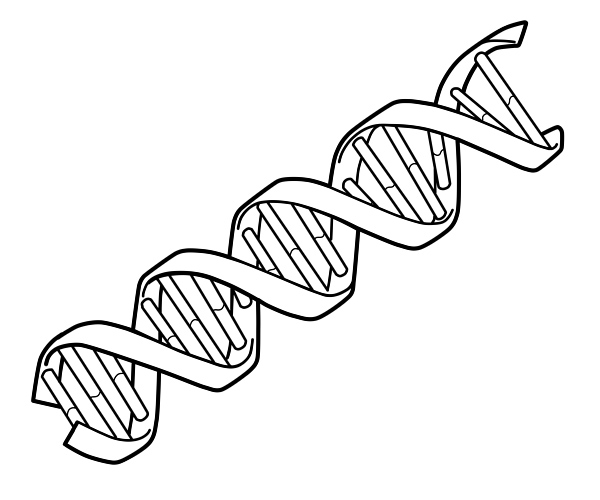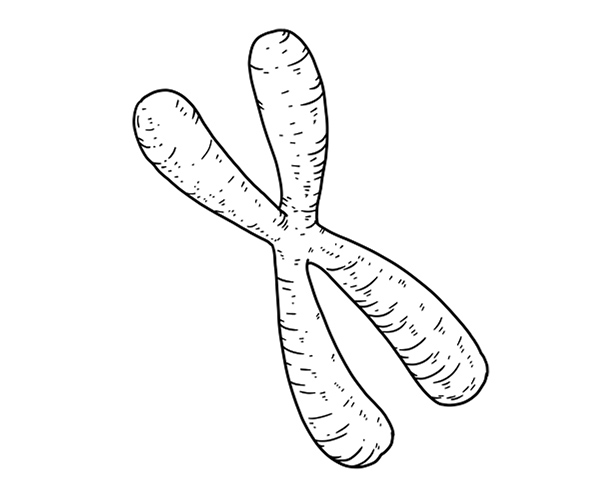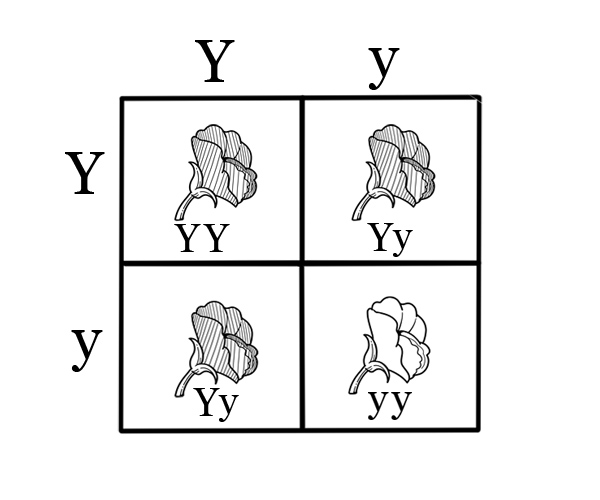Ever heard the phrase "that's in your gene"? Genetics can explain all the questions like what makes you unique or one of a kind; why family members look alike or why some diseases like diabetes or cancer run in families.
In this lesson, we will cover
Genetics refers to a branch of biology that deals with the study of genes, genetic variation as well as heredity in organisms.
Gregor Mendel was the first scientist to study genetics. He studied the inheritance of traits or the patterns in which traits are passed down from parents to offspring. He made the observation that organisms (he used pea plants) inherit traits through discrete units of inheritance. These units are what are currently known as genes.
Molecular inheritance and trait inheritance mechanisms of genes are just the primary principles of genetics in the 21st century. Modern genetics not only looks at inheritance nut also the function and behavior of genes. Genetics has led to several subfields such as population genetics and epigenetics.
Modern genetics began with the study of the nature of inheritance in plants by Mendel. Despite this pattern of inheritance being observed only for a few traits, his work suggested that heredity was particulate and not acquired. He also showed that inheritance patterns of many traits can be explained by simple rules and ratios.
Later, in 1905, William Bateson coined the term genetics, and with the growing interest in the field of genetics scientists tried to determine which molecules in the cell were responsible for inheritance.
Although genes were known to exist on chromosomes, chromosomes are composed of both protein and DNA. This sub-field of biology addresses how differences in the structures or expression of DNA molecules manifests as variation among organisms.
Below illustration depicts the double helix structure of DNA

The DNA is the molecular basis for biological inheritance. Every DNA strand is a chain made up of nucleotides that match each other in order to form what looks like a twisted ladder. In the nucleus of each cell, the DNA molecule is packaged into thread-like structures called chromosomes. Each chromosome is made up of DNA tightly coiled many times around proteins called histones that support its structure.
Below illustration depicts a chromosome
Each chromosome has a constriction point called the centromere, which divides the chromosome into two sections, or “arms.” The short arm of the chromosome is labeled the “p arm.” The long arm of the chromosome is labeled the “q arm.” The location of the centromere on each chromosome gives the chromosome its characteristic shape, and can be used to help describe the location of specific genes

The structure of the DNA was determined in 1953 by James Watson and Francis Crick using the X-ray crystallography. This showed that the DNA has a helical structure. This double helix model has two strands of DNA that have nucleotides pointing inwards, all matching a complementary nucleotide on the other strand. This structure shows that genetic information is stored in a sequence of nucleotides on each DNA strand. This structure also suggests a simple method for replication: in case the strands are separated, new partner strands can be constructed based on the sequence of the old strand. This property gives DNA its semi-conservative nature.
Despite the DNA structure showing how inheritance works, the manner in which DNA influences the behavior of cells was not yet known. Scientists then tried to understand how DNA affects the process of production of protein. It was discovered that a cell uses DNA as a template in order to create matching messenger RNA (these are molecules that have nucleotides that look like those of DNA). The nucleotide sequence of a messenger RNA is then used to create a sequence of amino acid in protein. The translation between nucleotide sequences and amino acid sequences is called genetic code.
Inheritance in organisms takes place by passing genes from parents to offspring. Alleles are the different discrete versions of the same gene.
The set of alleles for a certain organism is known as its genotype. Observable traits of an organism are said to be its phenotype. When organisms are heterozygous at a gene, one allele is called dominant because its qualities dominate the phenotype of an organism. The other allele is known as recessive because its qualities are not observed. Some alleles do not have complete dominance but express an intermediate phenotype (incomplete dominance), or express both alleles at once (codominance).
A Punnett square is a graphical representation of the possible genotypes of an offspring arising from a particular cross or breeding event. Creating a Punnett square requires knowledge of the genetic composition of the parents. In essence, it is a probability box that shows the odds of each possible trait happening.
Below illustration depicts Punnett square to determine the cross for a trait.

In diploid species like pea, every individual plant has two copies of every gene, a copy inherited from each parent. Many species have this pattern including humans. Diploid organisms that have two copies of the same allele of a given gene are known as homozygous. Organisms that have two different alleles of a gene are called heterozygous. For instance, the organisms with YY and yy are homozygous, and those with Yy are heterozygous.